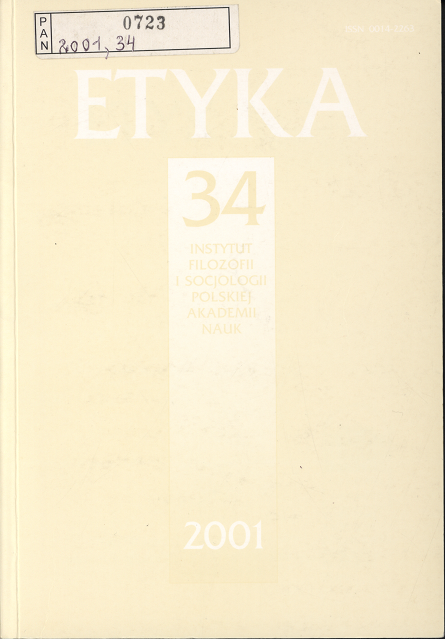How do we die? Ethics and terminal care
DOI:
https://doi.org/10.14394/etyka.659Abstract
Human life is a process. It is the process of becoming and ceasing to be a human being and it is a process of becoming and ceasing to be a human person. I accept the distinction between being a human being and being a human person, and distinguish further – future, present, and past human persons. The main problem of the paper is when do we become past persons. Having distinguished and presented four distinctive modi of human dying (hospital death, hospice death, nursing home death, and death at home), I concentrate on the problem of good death and ask what are the goods of the dying person. The goods are: life, the good of the mind, the good of the body, the good of the communal life, and (paradoxically) the good of death. The decision who is a terminal patient is a moral one and implies two different strategies with regard to life: the affirmation of life and the affirmation of death strategy. The first one, based on the concept of respect for human life, ignores the value of human dignity. The second one assumes that we should respect not only human biological life but the whole human person, and we cannot respect the whole person, if we do not respect her freedom of choice and her right to self-respect. Care for the artificially sustained but absolutely personless human life, is not proper terminal care but rather it is post-terminal care, and as such requires other, special justification.Downloads
Downloads
Published
How to Cite
Issue
Section
License
Works published in ETYKA are available under the Creative Commons Attribution 4.0 International Licence (CC BY 4.0), which entails acknowledgement of authorship. Under this licence, Authors keep their copyrights and agree that their works can be used again legally for any purpose, including commercial ones, without the need to obtain previous consent of the Author or publisher. The articles can be downloaded, printed, copied and disseminated; under the condition that the authorship is indicated accordingly, together with the place of original publication. The Authors preserve their copyrights to the above-mentioned works without any limitation whatsoever.



